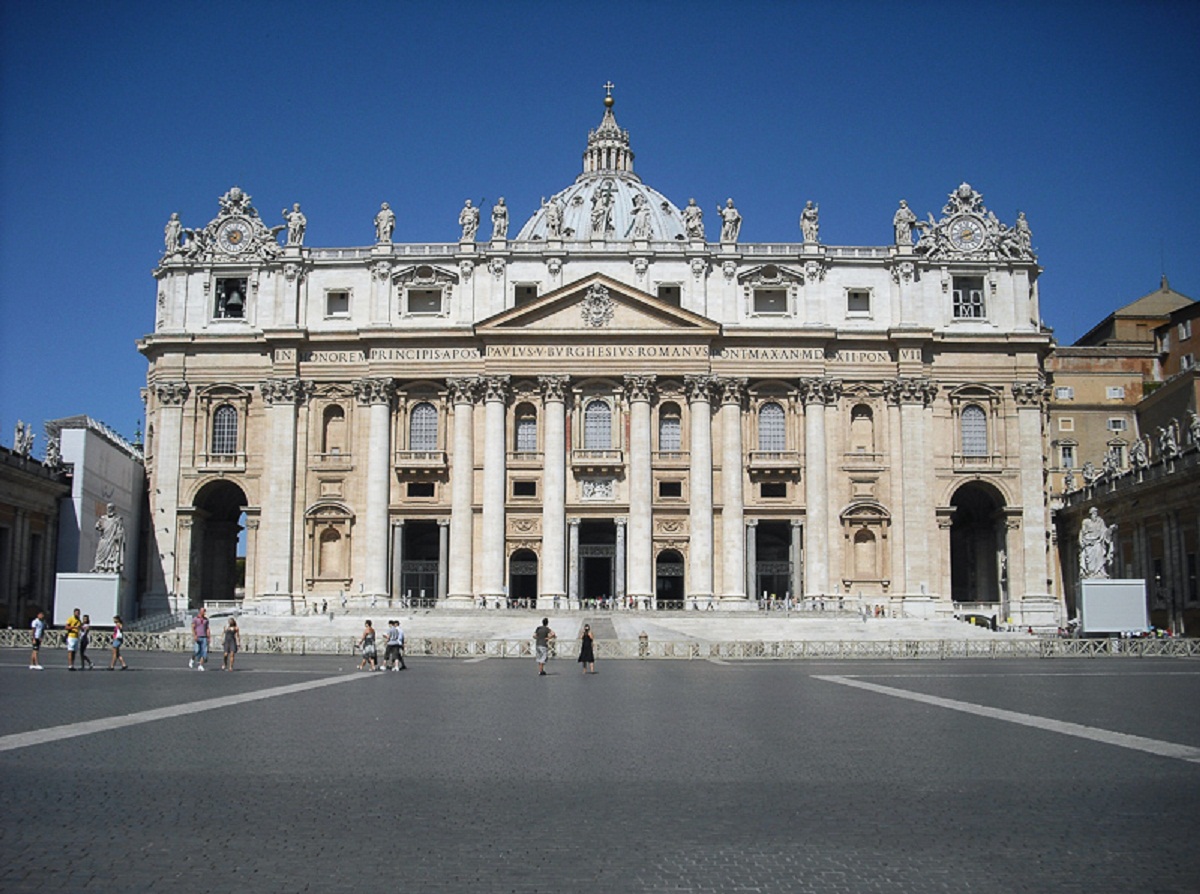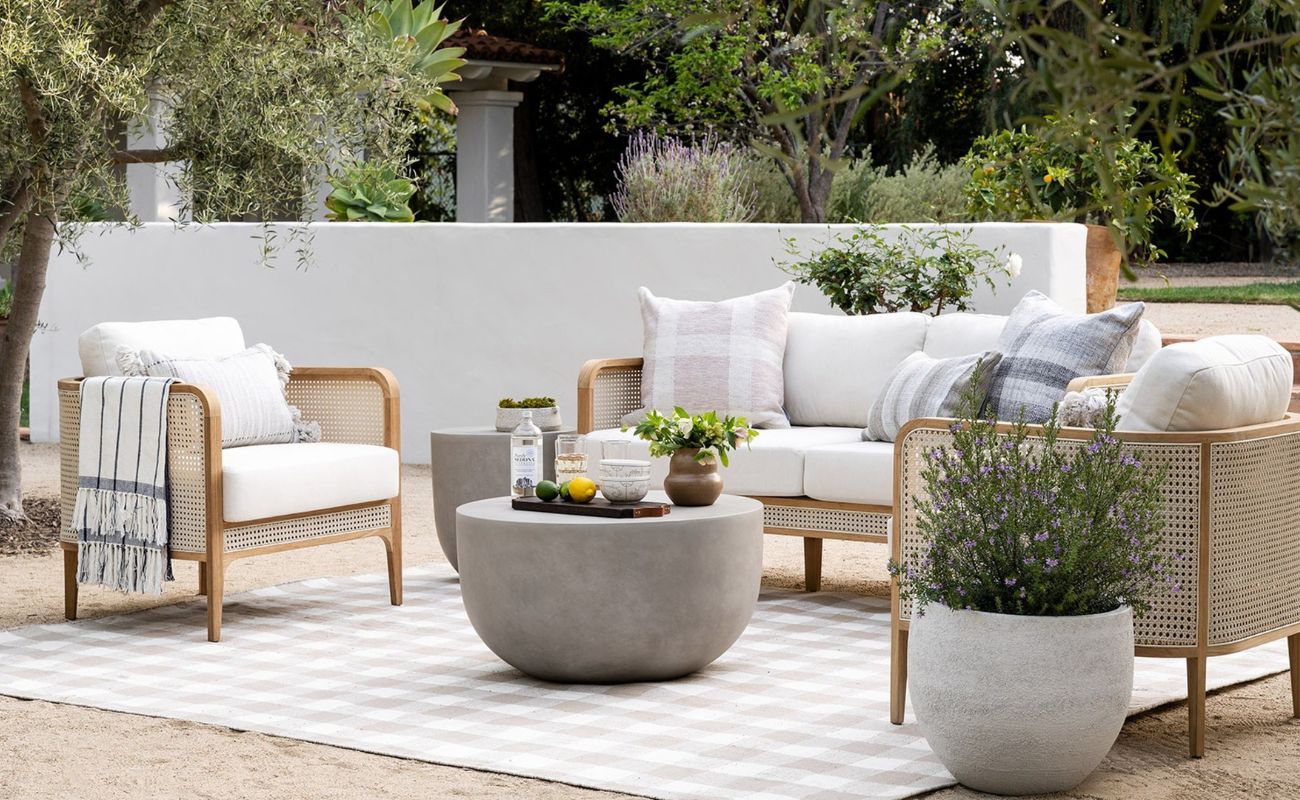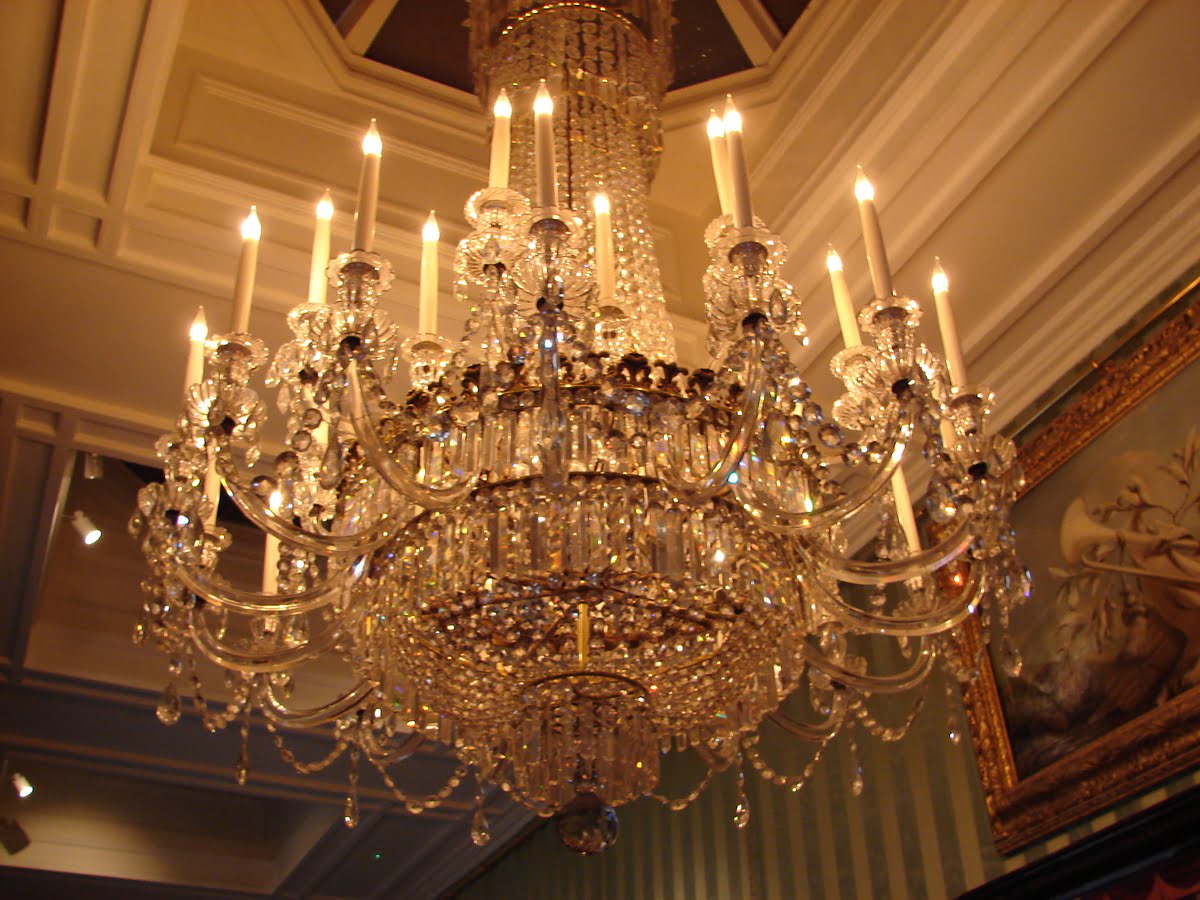

Furniture
What Does Chandelier Mean
Modified: February 23, 2024
Discover the meaning of chandelier and its significance in interior design. Explore a wide range of exquisite chandeliers and other furniture pieces for your home.
(Many of the links in this article redirect to a specific reviewed product. Your purchase of these products through affiliate links helps to generate commission for Storables.com, at no extra cost. Learn more)
Introduction
Welcome to the enchanting world of chandeliers! These magnificent fixtures have the power to transform any space from ordinary to extraordinary. With their elegant designs and dazzling illumination, chandeliers have become synonymous with luxury and grandeur.
In this article, we will explore the definition, history, styles, materials, functions, symbolism, and more, to provide you with a comprehensive understanding of these exquisite pieces of art.
Whether you’re an interior design enthusiast, a homeowner looking to add a touch of elegance to your living space, or simply curious about the world of chandeliers, this article will showcase the beauty and significance of these stunning fixtures.
So, let’s dive into the world of chandeliers and discover what makes them so special!
Key Takeaways:
- Chandeliers are more than just lighting fixtures; they are exquisite works of art that illuminate spaces with elegance, luxury, and timeless beauty, adding a touch of sophistication and grandeur to any interior.
- From their rich history to their diverse styles and symbolic meanings, chandeliers have captivated and fascinated people for centuries, symbolizing luxury, prestige, enlightenment, and elegance while serving as focal points that enhance the aesthetics of a room.
Definition of Chandelier
A chandelier is a decorative lighting fixture that is suspended from the ceiling and usually features multiple branches or arms, adorned with numerous light bulbs or candles. It is designed to provide both ambient and focal lighting while adding a touch of glamour and sophistication to any space.
The word “chandelier” is derived from the French word “chandelle,” which means candle. Historically, chandeliers were originally designed to hold candles as a primary source of illumination. Over time, they have evolved to incorporate various lighting technologies, including electric bulbs and LED lights.
Chandeliers are often made of metal, crystal, glass, or a combination of these materials. They come in a wide range of sizes, shapes, and styles, catering to different aesthetic preferences and interior design themes. From traditional and ornate designs to modern and minimalist ones, there is a chandelier to suit every taste.
What sets chandeliers apart from other types of lighting fixtures is their ability to make a bold statement and serve as a focal point in a room. They have the power to captivate attention and add a touch of opulence and sophistication to any space, whether it’s a grand ballroom, a chic dining room, or a cozy bedroom.
It’s important to note that chandeliers are not just limited to indoor spaces. Outdoor chandeliers, made from weather-resistant materials, are increasingly popular for illuminating outdoor living areas, gardens, and pergolas, adding a touch of elegance and ambiance to outdoor settings.
In summary, a chandelier is not just a lighting fixture; it is a work of art that illuminates and enhances a space, creating a captivating visual focal point that can transform any room into a stunning masterpiece.
History of Chandeliers
The history of chandeliers dates back to ancient times, with their origins rooted in the use of primitive lighting sources such as torches and oil lamps. The earliest forms of chandeliers can be traced back to ancient civilizations like the Egyptians and the Greeks, who hung metal or wooden structures from the ceilings of their homes to hold these lighting sources.
During the medieval period, chandeliers evolved into more intricate designs. They were often ornate and made of precious metals like gold or silver, adorned with hanging crystals or gemstones. These chandeliers were symbols of wealth and power, predominantly found in castles, palaces, and grand religious buildings.
However, it was during the 17th century in Europe that chandeliers truly flourished. The introduction of glassmaking techniques, such as the creation of lead crystal and the invention of crystal prisms, revolutionized the design and aesthetics of chandeliers. These advancements allowed for the creation of stunning pieces with dazzling refractions of light.
The French, in particular, played a significant role in the development of chandeliers during the Baroque and Rococo periods. French craftsmen perfected the art of crystal cutting and pioneered the use of crystal pendants and bobeche, adding even more brilliance and allure to the chandelier designs.
With the advent of gas and later electricity, chandeliers underwent another transformation in the 19th and 20th centuries. The introduction of gas lighting led to the creation of gas chandeliers, featuring multiple gas arms with individual burners. Eventually, electrical lighting replaced gas, and chandeliers were electrified, allowing for a convenient and reliable source of illumination.
Contemporary chandeliers have taken on a more diverse range of styles and materials. While traditional designs continue to be popular, modern chandeliers incorporate innovative materials like metal alloys, acrylics, or recycled materials, resulting in unique and sustainable lighting fixtures that cater to different design tastes.
Today, chandeliers are not limited to palaces or luxurious spaces. They have become more accessible and are available in a variety of sizes and price ranges, allowing homeowners and designers to incorporate them into a wide range of interiors, from classic to contemporary.
The history of chandeliers is a testament to their enduring appeal and timeless elegance. From their humble beginnings as basic lighting sources to becoming majestic works of art, chandeliers continue to captivate and illuminate spaces with their enchanting beauty.
Styles of Chandeliers
Chandeliers come in a diverse range of styles, each with its own unique characteristics and design elements. Whether you prefer a classic, ornate look or a more contemporary and minimalist aesthetic, there is a chandelier style to suit every taste and complement any interior design theme.
1. Traditional/Classic: Traditional chandeliers are characterized by their ornate detailing, intricate craftsmanship, and timeless elegance. They often feature crystal accents, elaborate metalwork, and candle-shaped light bulbs or faux candles. These chandeliers are popular in formal dining rooms, grand entryways, and traditional-style interiors.
2. Crystal: Crystal chandeliers are a coveted choice for those seeking opulence and glamour. These chandeliers are adorned with a multitude of sparkling crystals that catch the light, creating a dazzling visual display. From clear crystals to colored varieties like amber or sapphire, crystal chandeliers add a touch of luxury to any space.
3. Modern/Contemporary: Modern chandeliers feature sleek lines, minimalistic designs, and innovative materials. They embrace simplicity and often use materials like metal, glass, or acrylic. Modern chandeliers can be geometric, abstract, or even avant-garde, making them the perfect choice for contemporary homes and spaces with a minimalist aesthetic.
4. Transitional: Transitional chandeliers combine elements of both traditional and contemporary styles, striking a balance between old-world charm and modern sophistication. They feature clean lines with some decorative details, making them versatile and suitable for a wide range of interiors.
5. Rustic/Farmhouse: Rustic or farmhouse-style chandeliers evoke a cozy and inviting atmosphere with their natural materials and rustic finishes. These chandeliers often incorporate elements like wood, distressed metal, and vintage-inspired bulbs to create a warm and charming ambiance in spaces like country cottages, farmhouse kitchens, or rustic-themed interiors.
6. Industrial: Industrial-style chandeliers embrace a raw and edgy aesthetic, inspired by factories and warehouses. They feature utilitarian materials like metal, exposed bulbs, and minimalistic design elements. Industrial chandeliers lend a trendy and urban vibe to spaces like loft apartments, industrial-style kitchens, or modern industrial-themed interiors.
7. Art Deco: Art Deco chandeliers are characterized by their bold geometric shapes, sleek lines, and glamorous accents. They were popular during the 1920s and 1930s and often include materials like chrome, glass, and mirrored surfaces. Art Deco chandeliers are ideal for adding a touch of vintage elegance to spaces with a sophisticated and glamorous aesthetic.
These are just a few examples of the many styles of chandeliers available. When choosing a chandelier, consider the overall style of your space and select a design that complements and enhances the ambiance you wish to create.
A chandelier is a decorative lighting fixture that is often suspended from the ceiling and consists of multiple branches for holding light bulbs or candles. It is typically used to add elegance and style to a room.
Materials Used in Chandeliers
Chandeliers are crafted from a wide variety of materials, each lending its own unique appeal and aesthetic to these stunning lighting fixtures. The choice of materials contributes to the overall style, durability, and visual impact of the chandelier. Let’s explore some of the common materials used in chandelier construction:
1. Crystal: Crystal is perhaps the most iconic and luxurious material used in chandeliers. It is prized for its sparkling appearance and ability to refract light, creating dazzling visual effects. Chandeliers with crystal accents or entirely made of crystal are known for their opulence and timeless elegance.
2. Glass: Glass is another popular material in chandelier construction. It comes in various forms, such as clear, frosted, or colored glass. Glass chandeliers can feature smooth surfaces, textured finishes, or intricate blown-glass designs, offering a wide range of decorative possibilities.
3. Metal: Metal is a versatile material found in chandeliers, providing both structure and style. Common metals used include brass, bronze, iron, and stainless steel. Metal chandeliers can be highly decorative with ornate filigree work or more streamlined and minimalistic for a contemporary look.
4. Wood: Wood adds warmth and a rustic touch to chandeliers. It is commonly used in farmhouse-style or country-themed chandeliers. Wood can be left in its natural state for a more organic look, or it can be stained or painted to match the desired aesthetic.
5. Acrylic: Acrylic is a lightweight and affordable alternative to crystal or glass. It can mimic the appearance of these materials while offering durability and versatility. Acrylic chandeliers are often used in modern and minimalist designs.
6. Fabric: Fabric shades or decorative fabric elements can be incorporated into chandeliers to soften the light and add a touch of elegance. Silk, linen, or organza are common choices for fabric materials, providing a subtle and diffused glow when illuminated.
7. Plastic: In more budget-friendly options, chandeliers may incorporate plastic elements. While not as luxurious as other materials, plastic can still offer interesting design possibilities and durability.
It’s important to note that chandeliers often combine multiple materials to create a visually stunning and captivating piece. For example, a chandelier may feature metal arms and crystal pendants or a combination of glass and brass. The choice of materials ultimately depends on the desired style, budget, and desired visual impact.
When selecting a chandelier, consider the materials used and how they will complement the overall design scheme of your space. Whether you prefer the dazzling brilliance of crystal or the rustic charm of wood, the materials in a chandelier contribute to its beauty and make it a true work of art.
Read more: What Does Faucet Mean
Functions and Uses of Chandeliers
Chandeliers serve more than just a practical lighting purpose; they are statement pieces that can transform a space with their beauty and elegance. Here are some of the key functions and uses of chandeliers:
1. Ambient Lighting: As a primary light source, chandeliers provide ambient lighting that illuminates an entire room. Depending on the number and wattage of the bulbs, they can create a soft and warm glow or a bright and vibrant light, setting the overall mood and atmosphere.
2. Focal Point: Due to their striking designs, chandeliers often serve as the focal point of a room. They draw the eyes upwards and become a captivating centerpiece that adds drama and visual interest to any space. Chandeliers can enhance the architectural features of a room or become a stylish and attention-grabbing decorative element.
3. Aesthetics and Style: Chandeliers are very effective in enhancing the overall aesthetics and style of a room. Whether it’s a luxurious crystal chandelier in a grand ballroom or a minimalist and modern chandelier in a contemporary living room, they add a touch of elegance and sophistication that elevates the ambiance and creates a visually stunning space.
4. Decorative Accents: Chandeliers are not only functional lighting fixtures but also decorative accents in their own right. They come in a wide range of designs, shapes, and materials, allowing you to choose one that complements your interior design theme. From traditional and ornate to sleek and minimalist, chandeliers can be an integral part of your decor style.
5. Creating Drama: Chandeliers have the ability to create a sense of drama and theatricality in a room. Their dazzling illumination, combined with their unique design and placement, can make a powerful statement and transform an ordinary space into a luxurious and enchanting environment.
6. Enhancing Specific Areas: Chandeliers can be strategically placed to enhance specific areas of a room. For example, in a dining room, a chandelier can be positioned above the dining table to create a focal point and provide focused task lighting for meal times. In a grand foyer, a chandelier can welcome guests and set the tone for the rest of the house.
7. Symbol of Status and Luxury: Throughout history, chandeliers have been associated with wealth, luxury, and grandeur. Owning a chandelier has been seen as a symbol of status and prestige. Even today, chandeliers continue to exude a sense of opulence, adding a touch of luxury to any space.
Chandeliers are versatile lighting fixtures that can be used in a variety of spaces, including dining rooms, living rooms, grand halls, hotels, restaurants, and even outdoor areas such as garden patios. Their functions extend beyond mere illumination, making them an integral part of interior design, creating ambiance, and adding a touch of charm and elegance to any environment.
Symbolism and Meaning of Chandeliers
Chandeliers hold symbolic meaning beyond their functional and aesthetic appeal. Throughout history, these magnificent fixtures have been associated with various concepts and have held different symbolic interpretations. Here are some of the symbolic meanings of chandeliers:
1. Luxury and Prestige: Chandeliers have long been associated with wealth, luxury, and opulence. Their intricate designs, use of precious materials, and ability to cast a brilliant light create an atmosphere of grandeur and sophistication. Owning a chandelier has often been seen as a symbol of wealth and prestige.
2. Illumination and Enlightenment: Chandeliers represent the power of light and illumination. Through their numerous bulbs or candles, they emit a radiant glow that brightens a space. Symbolically, chandeliers can represent knowledge, enlightenment, and the pursuit of higher understanding.
3. Elegance and Grace: Chandeliers are synonymous with elegance and grace. Their elaborate designs, cascading crystals, and artistic craftsmanship evoke a sense of beauty and refinement. The presence of a chandelier in a space adds a touch of sophistication, elevating the ambiance and creating a visually stunning atmosphere.
4. Focal Point and Attention: Chandeliers serve as focal points in a room, drawing attention and captivating viewers. They become a center of attraction, commanding the focus of the space and evoking a sense of awe. Symbolically, chandeliers represent the ability to command attention and make a lasting impression.
5. Timeless Beauty: Chandeliers have stood the test of time, maintaining their allure and beauty throughout the centuries. They are often associated with classic and enduring design elements. Symbolically, chandeliers embody the concept of timeless beauty and the appreciation of artistry that transcends temporary trends.
6. Social Gatherings and Celebrations: Chandeliers have traditionally been featured in grand ballrooms, palaces, and upscale venues where social gatherings and celebrations take place. They symbolize festivities, joy, and the coming together of people for special occasions. Chandeliers represent the spirit of celebration and the joy of being in the company of others.
7. Architectural Significance: Chandeliers can enhance the architectural features of a space. They add drama, highlight intricate details, and emphasize the style and craftsmanship of the room. Symbolically, chandeliers can represent the importance of attention to detail and the value of architectural beauty.
It’s important to note that the symbolism of chandeliers can vary across different cultures and contexts. However, universally, they are widely regarded as a symbol of beauty, luxury, and sophistication. Whether adorning a grand hall or gracing a contemporary living room, chandeliers hold a symbolic meaning that resonates with individuals appreciative of their timeless and majestic presence.
Conclusion
Chandeliers are more than just lighting fixtures; they are exquisite works of art that illuminate spaces with their elegance and brilliance. From their rich history to their diverse styles and symbolic meanings, chandeliers have captivated and fascinated people for centuries.
Whether you prefer the classic charm of a crystal chandelier, the modern allure of a sleek and minimalist design, or the rustic warmth of a farmhouse-inspired fixture, there is a chandelier to suit every taste and complement any interior style.
Chandeliers serve multiple functions beyond providing illumination. They act as focal points, enhancing the aesthetics of a room and creating a sense of drama and grandeur. They symbolize luxury, prestige, enlightenment, and elegance.
With their ability to transform any space into a captivating masterpiece, chandeliers have become an integral part of interior design. Whether in grand ballrooms, opulent hotels, or the cozy corners of our homes, chandeliers add a touch of beauty, sophistication, and ambience.
As you embark on your journey to find the perfect chandelier, consider the history, styles, materials, functions, and symbolism behind these remarkable fixtures. Let your imagination soar as you envision the mesmerizing light and radiance that a chandelier can bring to your living space.
So, embrace the enchanting world of chandeliers, and elevate your surroundings with the timeless allure of these captivating masterpieces. Whether for grand occasions or everyday moments, a chandelier will always inspire awe and leave a lasting impression.
Frequently Asked Questions about What Does Chandelier Mean
Was this page helpful?
At Storables.com, we guarantee accurate and reliable information. Our content, validated by Expert Board Contributors, is crafted following stringent Editorial Policies. We're committed to providing you with well-researched, expert-backed insights for all your informational needs.















0 thoughts on “What Does Chandelier Mean”